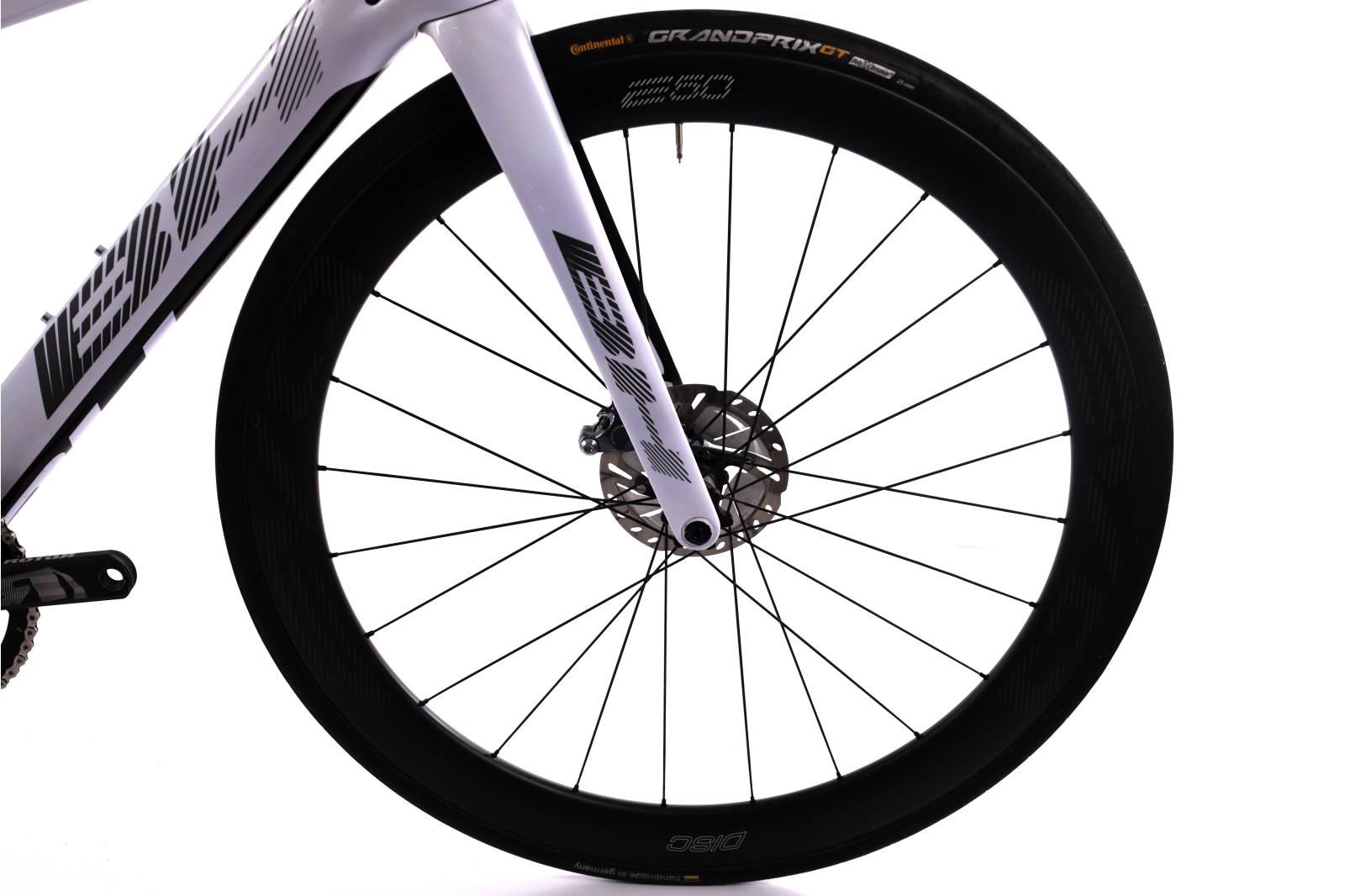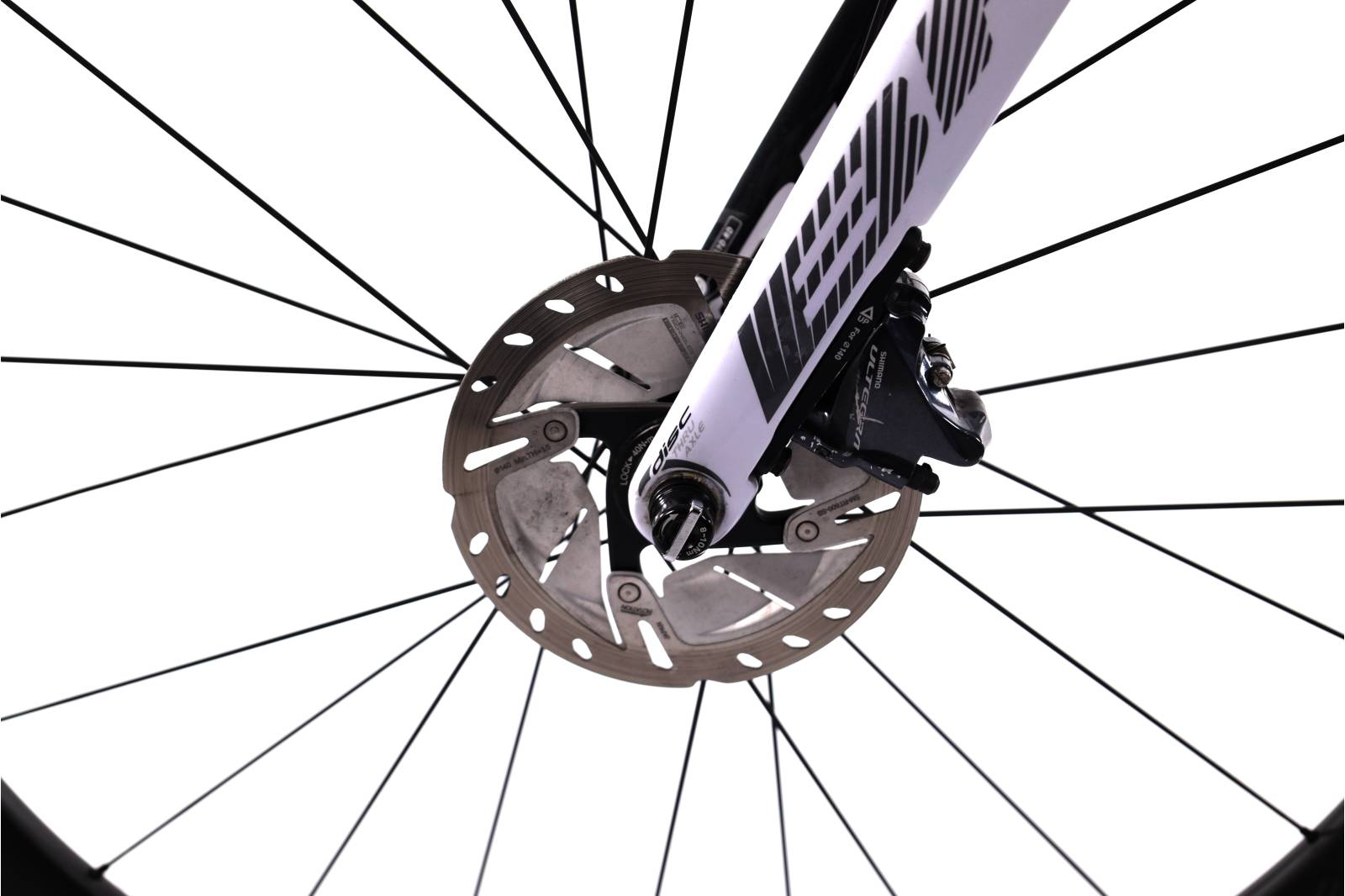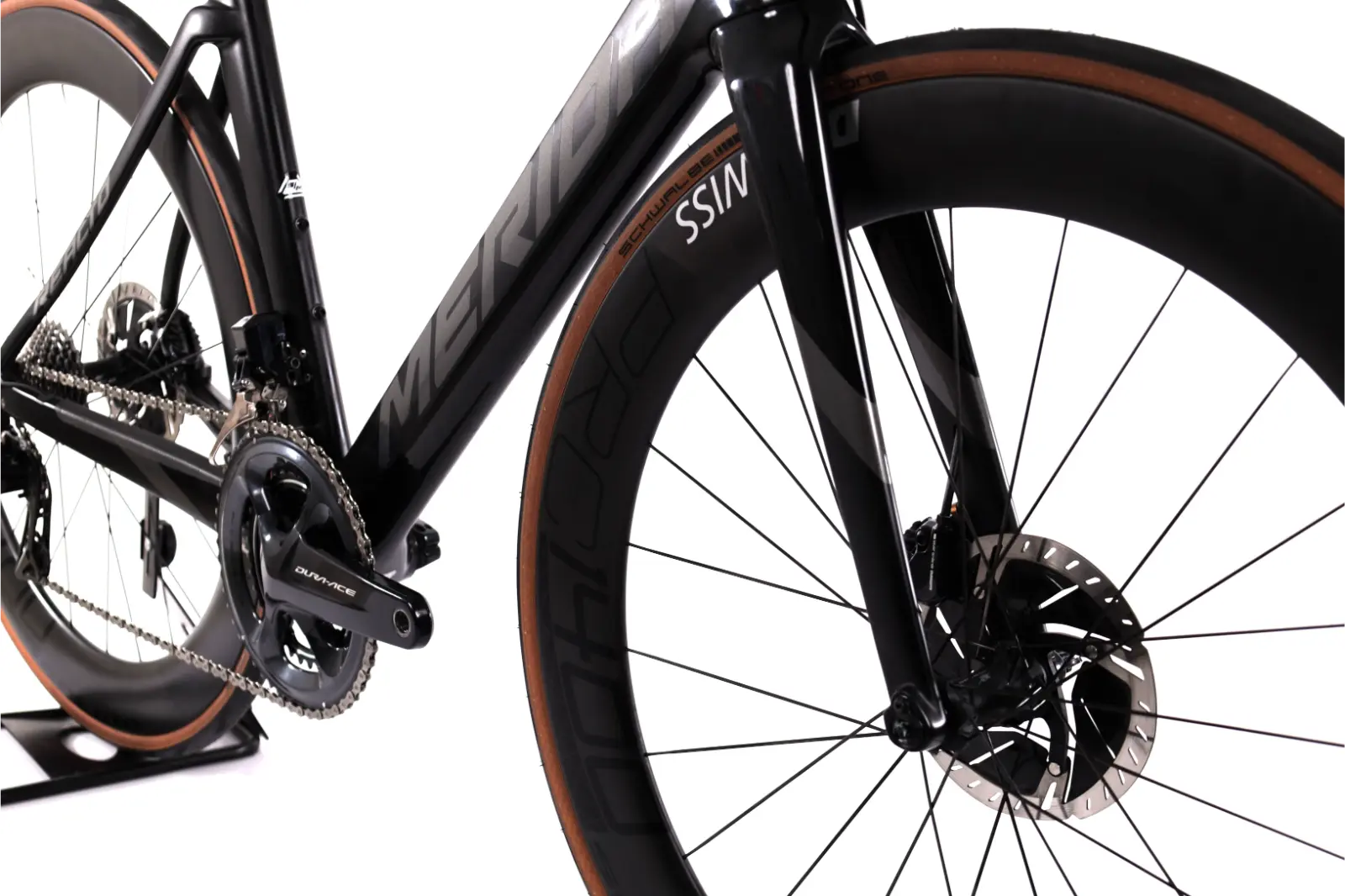The day has come to give your road bike a makeover. It's time to look for new wheels. But... where to start? Aluminum or carbon? What rim depth should I buy? And how many spokes should it have? In this article, I will show you the benefits of each option so you can buy the wheels that best suit your needs. The truth is, when it comes to deciding which cycling wheels to buy, you need to know what you want to achieve with them, because you can't have it all.
Road bike wheel sizes
The most common size for road bike wheels is 700C. This measurement is determined according to the French system and indicates the outer diameter of the wheels (including the tire), so this value is approximate. Another more standard type of measurement is the ISO (ETRTO), which indicates the inner width of the wheel and the diameter (622 for road wheels). The tires are also governed by the ISO (ETRTO) values, indicating the tire width (23, 25, 28…) and its inner diameter (622 for road), which corresponds to the size of the road bike wheel.
>> The key to making your bike lighter is in the wheels
Types of wheels by material

The two most commonly used materials today are aluminum and carbon. Aluminum will give us a more affordable price than carbon (currently it's about half the price for similarly built wheels). Carbon, on the other hand, will give us greater lightness and more stiffness, achieving a more optimal performance in our pedaling.
Types of braking
Currently, the two most commonly used types of brakes are V-Brake and disc brake.
V-Brake brakes
V-Brake brakes are the most classic and widely used braking system, the traditional pad brakes. They can apply braking on an aluminum rim or on a carbon braking surface. In the first case, they provide progressive braking. V-Brake types on carbon surfaces, for their part, are lighter but also less reliable on wet asphalt.
Disc brakes

Little by little, disc brakes for road cycling are entering the market and it seems like they're here to stay. Their adoption has not been as easy as in mountain biking. Weight, in a discipline where every milligram counts, makes them rejected by the purists. However, the greater power and effectiveness of the braking gives us a huge plus in safety. On the other hand, road cycling wheels that incorporate disc brakes must be more reinforced due to the level of stress that these abrupt brakings subject them to.
>> Pros and cons of disc brakes on road bikes
Parts of the wheel
The two main components of the wheel are the rim and the tire. The rim is the outer ring, where the tire fits and the spokes are assembled. The tire, in turn, can be of three types:
- With inner tube
- Tubeless (without inner tube)
- Tubular
However, when deciding which wheels to buy for your road bike, it is necessary to look at other components and factors beyond the rim and the tire.
Wheel profiles

Profiled wheels are an evolution compared to the classic wheels of the past. They consist of an extension of the rim surface from the tire to the inside of the wheel and offer an aerodynamic advantage. Depending on the profile, wheels can be classified as:
-
Low profile: Wheels with a profile less than 30 mm, theoretically for more climbers, where the aim is to minimize weight at the expense of aerodynamics.
-
Medium profile: Probably the most in demand today thanks to their versatility. They are usually between 40 and 50 mm in profile. Aesthetically, they are more attractive than climbing wheels; we could say they dress up the bike more. In addition, they gain more aerodynamics without increasing the weight too much. They also improve vertical stiffness. We find them in aluminum and carbon.
- High profile: Wheels from more than 50 mm up to 90 mm. They are intended for very specialized disciplines, such as time trial, triathlon, or track cycling. They offer a lot of stiffness, but little absorption of irregularities in the terrain. They are made of carbon.
The rim width
The rim width (or channel width) determines the maximum width of the tires that a wheel can accommodate. Traditionally, road cycling wheels used narrow tires, but in recent years, wider tires have become popular, offering a larger contact surface with the asphalt.
>> Wide rims, a new trend in road cycling
According to the European Tyre and Rim Technical Organization, these are the tire widths that can be installed on a bicycle depending on the rim channel width.
| Tire width (in mm) | Internal rim width (in mm) | ||||||||
| 13C | 15C | 17C | 19C | 21C | 23C | 25C | 27C | 29C | |
| 18 | X | ||||||||
| 20 | X | ||||||||
| 23 | X | ||||||||
| 25 | X | X | X | ||||||
| 28 | X | X | X | ||||||
| 32 | X | X | X | ||||||
| 35 | X | X | X | X | |||||
| 37 | X | X | X | X | |||||
| 40 | X | X | X | X | X | ||||
| 42 | X | X | X | X | X | ||||
| 44 | X | X | X | X | X | X | |||
| 47 | X | X | X | X | X | X | |||
| 50 | X | X | X | X | X | X | |||
| 52 | X | X | X | X | X | X | X | ||
| 54 | X | X | X | X | X | X | |||
| 57 | X | X | X | X | X | X | |||
| 60 | X | X | X | X | X | X | |||
| 62 | X | X | X | X | X | X | |||
This table tells us what tire width we can mount on each rim, but keep in mind that even if our rim can support large tire widths, they may be incompatible with our bike frame.
The spokes
The stiffness and strength of a wheel are directly related to the number of spokes and their arrangement. Depending on their distribution, there can be straight spokes, 2, 3 or 4-cross (the number of times a spoke crosses another). The more crossings, the greater the robustness, weight, and number of spokes per wheel. If the wheel is for disc brakes, it will need more reinforcement than one for rim brakes. The spokes connect the wheel hub to the rim. Depending on how they are anchored to the hub, they can be bent or straight pull (called straight pull). The latter are much more reliable, because the distribution of forces is spread along the entire spoke and not just at one point, as happens with bent spokes. Spokes can be round or flat. In principle, this should not affect their quality, although flat spokes offer an aerodynamic advantage. Generally, and due to their great strength, most spokes are made of stainless steel. There are also aluminum and titanium spokes. The latter are very strong, but more expensive.
The hub
The hub is the element on which the wheel rests and rotates. According to their rotation system, there are ball bearing hubs (like Shimano's) or sealed bearings, which are stiffer but heavier than balls. There is no standard for hubs for road cycling wheels, so when buying new wheels we must be very clear if they are compatible with our bike, freehub, cassette, etc... Although in some cases there are adapters for smaller to larger hubs. Wider hubs help the spokes achieve greater lateral stiffness.
Conclusions about road bike wheels

When we go to buy wheels for our road bike , the first thing we need to be clear about is what we want to achieve with them: greater lightness, greater comfort, less aerodynamic resistance... Then, we should find the features in the wheels that best suit us. And finally, play with the balance that Keith Bontrager once taught us: “Among strong, light, or cheap, pick two”.
